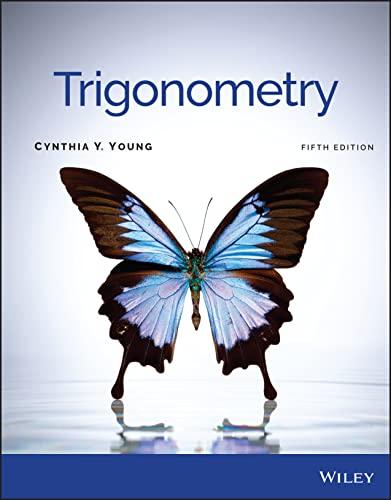Question
Attempt only if you are sure! 15) Bivariate data (4, 10),(1, 3),(0, 2) is assumed to arise from the model yi = b|xi 3| +
Attempt only if you are sure!
15) Bivariate data (4, 10),(1, 3),(0, 2) is assumed to arise from the model
yi = b|xi 3| + ei, where b is a constant and ei are independent random variables.
(a) What assumptions are needed on ei so that it makes sense to do least squares fit of
a curve y = b|x 3| to the data?
(b) Given the above data, determine the least squares estimate for b.
For this problem we want you to calculate all the way to a fraction b = r/s, where r and s s are integers.
Over the past years, data shows that the regular admissions procedure, a candidate could submit his application to the Medical School beginning in July of the year preceding the academic year for which admission was sought. Record 149. Because of the large number of applications,[2]the admissions committee screened each one to select candidates for further consideration. Candidates whose overall undergraduate grade point averages fell below 2.5 on a scale of 4.0 were summarily rejected.Id.,at 63. About
274
*274one out of six applicants was invited for a personal interview.Ibid.Following the interviews, each candidate was rated on a scale of 1 to 100 by his interviewers and four other members of the admissions committee. The rating embraced the interviewers' summaries, the candidate's overall grade point average, grade point average in science courses, scores on the Medical College Admissions Test (MCAT), letters of recommendation, extracurricular activities, and other biographical data.Id.,at 62. The ratings were added together to arrive at each candidate's "benchmark" score. Since five committee members rated each candidate in 1973, a perfect score was 500; in 1974, six members rated each candidate, so that a perfect score was 600. The full committee then reviewed the file and scores of each applicant and made offers of admission on a "rolling" basis.[3]The chairman was responsible for placing names on the waiting list. They were not placed in strict numerical order; instead, the chairman had discretion to include persons with "special skills."Id.,at 63-64.
Question 1
What is favism?
Question 2
What is the haemoglobin content of reticulocytes and how can this be measured or determined?
Question 3
We are told that an erythrocyte sedimentation rate (ESR) above 100 mm/h has a limited differential diagnosis, mainly vasculitis, malignancy and granulomatous diseases. Could you explain whether that applies to an ESR after one hour or two?
Question 4
What causes a raised erythrocyte sedimentation rate (ESR)?
Question 5
What are the causes of very raised erythrocyte sedimentation rate (ESR)? I mean an ESR 100 mm/h. Is this test diagnostic in any disease besides polymyalgia rheumatica and giant cell arteritis?
Question 6
1. Does the erythrocyte sedimentation rate (ESR) rise with age?
2. Can an ESR of 50 mm/h in an 80-year-old female with no evidence of systemic disease be considered normal?
Question 7
1. What is a 'normal' erythrocyte sedimentation rate (ESR)? Is the equation of a normal ESRage 10, correct?2. Would a normal ESR exclude a vasculitic cause in the case of stroke? 65
Question 8
In which conditions is C-reactive protein (CRP) more informative than the erythrocyte sedimentation rate (ESR)?
Question 9
What is the management of an isolated high ferritin (without any signs, symptoms or changes in the other blood investigations)?
Question 10
Is the mean corpuscular volume (MCV) useful? What is the RDW and when is it used?
Step by Step Solution
There are 3 Steps involved in it
Step: 1

Get Instant Access to Expert-Tailored Solutions
See step-by-step solutions with expert insights and AI powered tools for academic success
Step: 2

Step: 3

Ace Your Homework with AI
Get the answers you need in no time with our AI-driven, step-by-step assistance
Get Started


